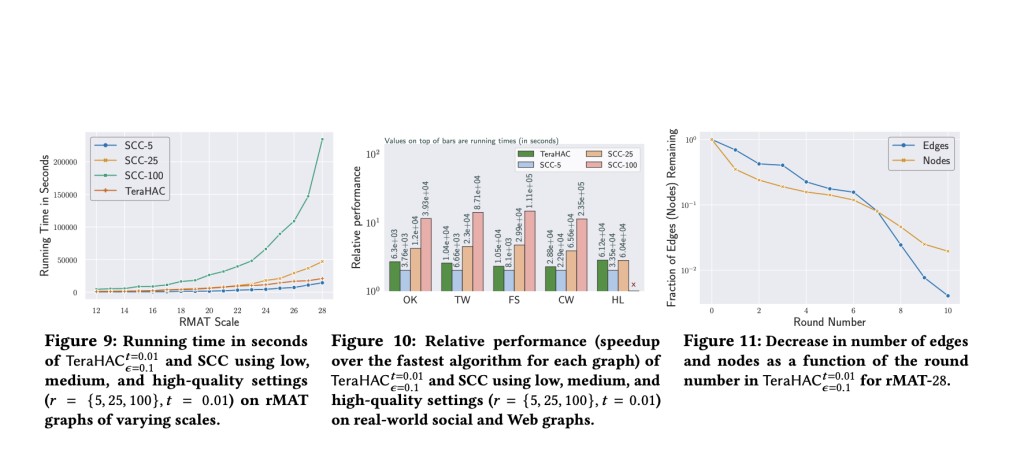The Graph Mining team within Google Research has introduced TeraHAC to address the challenge of clustering extremely large datasets with hundreds of billions of data points, primarily focusing on trillion-edge graphs used commonly in tasks like prediction and information retrieval. The graph clustering algorithms enable the merging of similar items into groups for a better understanding of relationships in the data. Traditional clustering algorithms struggle to scale efficiently to such massive datasets due to high computational costs and limitations in parallel processing. The researchers aim to overcome these challenges by proposing a scalable and high-quality clustering algorithm.
Previous methods like affinity clustering and hierarchical agglomerative clustering (HAC) have been proven effective but face limitations in scalability and computational efficiency. Affinity clustering, while scalable, can produce erroneous merges due to chaining, leading to suboptimal clustering results. On the other hand, HAC offers high-quality clustering but suffers from quadratic complexity, making it impractical for trillion-edge graphs. The proposed method, TeraHAC (Hierarchical Agglomerative Clustering of Trillion-Edge Graphs), uses a new method based on MapReduce-style algorithms to make it scalable while still getting good clustering results. By partitioning the graph into subgraphs and performing merges based solely on local information, TeraHAC addresses the scalability challenge without compromising clustering quality.
TeraHAC operates in rounds, where each round involves partitioning the graph into subgraphs and independently performing merges within each subgraph. The novel idea is to find merges using only local information in subgraphs and ensure the final clustering result is close to what a normal HAC algorithm would get. This approach enables TeraHAC to achieve scalability to trillion-edge graphs while significantly reducing computational complexity compared to previous methods. Experimental results demonstrate that TeraHAC can compute high-quality clustering solutions on massive datasets containing several trillion edges in under a day, utilizing modest computational resources. TeraHAC outperforms existing scalable clustering algorithms regarding precision-recall tradeoffs, making it the preferred choice for large-scale graph clustering tasks.
In conclusion, Google presents TeraHAC as a groundbreaking solution to the challenge of clustering trillion-edge graphs efficiently and effectively. TeraHAC is able to achieve scalability without sacrificing the quality of clustering by utilizing a distinctive method that combines MapReduce-style algorithms with local information processing. The proposed method addresses the limitations of existing algorithms by significantly reducing computational complexity while delivering high-quality clustering results.
Check out the Paper and Blog. All credit for this research goes to the researchers of this project. Also, don’t forget to follow us on Twitter. Join our Telegram Channel, Discord Channel, and LinkedIn Group.
If you like our work, you will love our newsletter..
Don’t Forget to join our 40k+ ML SubReddit
The post Google AI Team Introduced TeraHAC Algorithm and Demonstrated Its High Quality and Scalability on Graphs of Up To 8 Trillion Edges appeared first on MarkTechPost.
Source: Read MoreÂ



